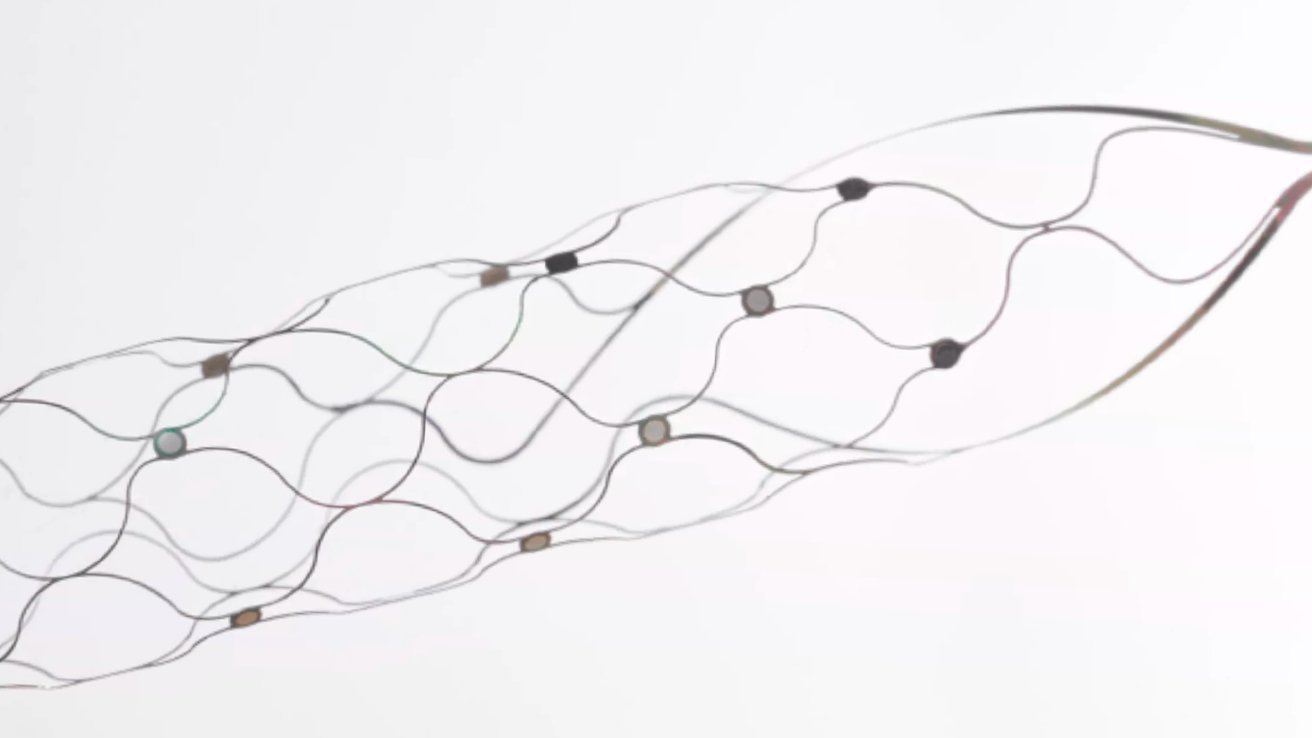Apple’s research into future technology usage has led to an ALS patient controlling an Apple Vision Pro with their mind, using an implant.
While Apple products can be controlled by many different means, including touch and voice, Apple is keen to work on new interface types. One of those under development is using a person’s thoughts to control a device.
In a profile of Apple’s work in the field, the Wall Street Journal profiled on Tuesday about its explorations in the field with startup Synchron. While Apple provides devices that could be controlled, Synchron creates the Stentrode implant that works as a brain computer interface.
The Stentrode is a stent-like device that is placed in a vein on the brain’s motor cortex. Electrodes on the implant read electrical signals from the brain.
The idea is that signals received by the implant can be translated to detect a user’s intention. That is then fed into the host device and an action performed, such as moving a cursor around a screen.
The profile discusses early Stentrode tester Mark Jackson, who could feel his legs shake while looking over the edge of a mountain in the Swiss Alps. However, due to dealing with amyotrophic lateral sclerosis, or ALS, this was really Jackson at home in Pittsburgh, using an Apple Vision Pro connected to the implant.
Still early in development
The project has a massive possibility of bringing new life to people with major motion issues. Patients with severe spinal cord injuries or diseases like ALS can’t necessarily move or use their hands to control a smartphone or other items, making such a control system an ideal thing to develop.
The interface works around Switch Control, a function of Apple’s operating systems that interprets signals as if they are like switches controlling a joystick.
While practical, Jackson warns that the technology is still in its infancy, as it has major hurdles to overcome. Though the tech allows him to move around a screen with a cursor, it’s far from the speed of someone swiping their fingers to do the same task.
The tech itself is also still being tested and rolled out, to varying degrees of invasiveness. Competitor Neuralink also has its own implant, the N1, which can capture more data because it has more than 1,000 electrodes implanted into the brain itself.
By contrast, Stentrode uses just 16 electrodes, and are just placed on top.
It has also been relatively slow progress testing out the tech on living people. So far, Synchron has only installed the Stentrode in ten people since 2019.
While the reporting is good, it’s not clear why the Wall Street Journal thinks that this is an exclusive, though. Apple has long been a partner of Synchron in brain-computer interfaces.
In 2022, reports surfaced where the Synchron Switch was used to send single-word text messages through a connected iPad.
By September 2024, Synchron marked the one-year milestone of the Stentrode being used as an implant in multiple patients without serious adverse effects.





